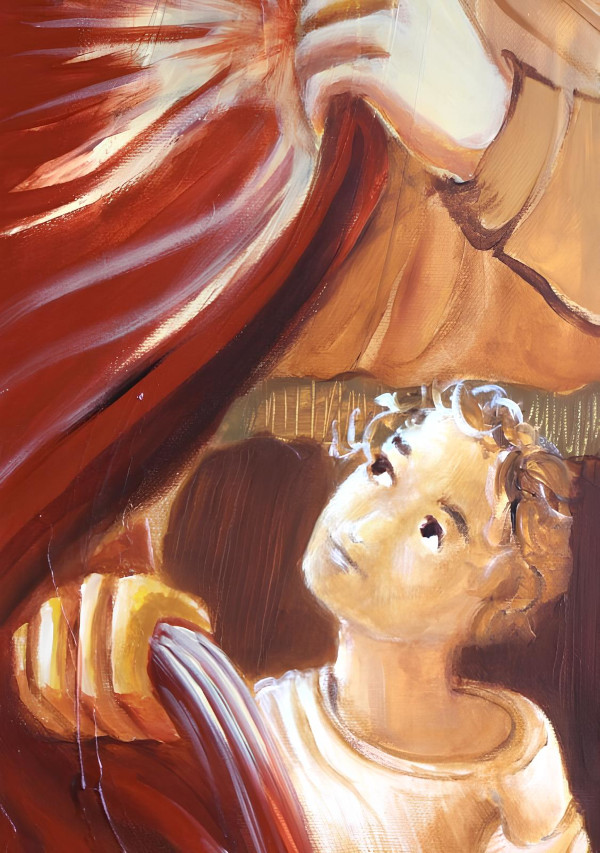
Dressing the naked
From the website of the CEI’s National Office for the Pastoral Care of Health, commentary on the third work of corporal mercy
(by Michele Sardella, diocesan and regional director for the health ministry in Lazio) )
The human act of clothing those who are naked is based, for the Bible, on the original act of God himself who covered human nakedness by preparing clothing and then clothing Adam and Eve after their transgression: “The Lord God made the man and to the woman tunics of skins and clothed them” (Gen3:21).
This act of mercy toward the two progenitors highlights God’s concern for us because he knows that nakedness means not only exposure to the inclement weather, but also humiliation, unworthiness, infirmity, defenselessness and danger.
It is about the nakedness that takes away identity, the nakedness of the anonymous, the without – dignity: the sold slave (Gen 37:23), the prostitute exposed to the gaze of anyone (Jer 13:26-27; Hos 2:4-6), the mentally ill person living a condition of alienation ( Mk 5:1-20).
From this concern of God for us, scripture thus elaborates a compassion for the body that is expressed in commands, “Make part of your garments to one who is naked” ( Tb 4:16), which is among the attributes of justice (“the righteous…covers with garments one who is naked”: Ez 18:5,7,16), which lies at the heart of an authentic fasting practice (“this is the fast I want:…, to clothe one whom you see naked”: Is 58:7).
It is an act of true mercy to offer clothing in order to clothe the naked
While we hardly encounter people today who are completely naked due to a lack of clothing, it is instead possible that certain factors may limit or prevent them from acquiring it.
Think, for example, of certain categories such as immigrants, the mentally ill, the homeless, gypsy children who walk around barefoot, and the elderly who in the winter period do not have the opportunity to purchase adequate clothing.
These types of people often turn to collection centers to seek help and clothing.
Whether we know this reality directly or indirectly, when we beg for our discarded clothes we make sure that they are decent in appearance of form and costume.
Then changing our wardrobe will not only be an opportunity to buy fashionable new clothes, but will be a gesture of solidarity and sharing.
In the context of health ministry, what does it mean to dress the naked?
Dressing and undressing every day is a natural gesture, but it can be challenging for a sick person because they have problems related to disability, mood and cognitive status disorders.
Particularly in cognitive status disorders, people with Alzheimer’s no longer know how to wear clothes and in what order, do not realize the need to change, and struggle to choose clothes according to the season and weather conditions. This is compounded by issues related to reduced mobility: lacing, unlacing, tying,… .
In these cases, helping them dress themselves by trying to enhance residual autonomy is the best way to make them feel less dependent on others. Very gently, help can be given to choose clothing that reflects taste, choose comfortable clothes, try to limit the use of buttons, buckles, zippers, which, in some cases, could also be the cause of wounds or injuries.
Requiring more attention is the care of both acute and chronic bedridden persons where the pajamas the nightgown are not always worn and sometimes the dress may coincide with the sheet.
If clothing translates that sense of modesty that is perhaps the most ancient gesture that distinguishes humans from animals and is not limited to the sexual sphere, one understands how discovering the bedridden sick person in order to take care of his or her personal hygiene, to change the sheets or to help him or her in the performance of normal physiological functions, requires special attention.
It is not enough just to have good will or a sense of duty, which often reckons with our state of mind, but we need to remember that being covered or clothed has to do with the totality of the human being and especially with the sense of identity and subjectivity.
Too often we forget to pay attention to the gestures of help we make, but it is precisely these that qualify us and make us worthy of trust by those who receive them.
Dressing our gestures with this attention therefore implies dressing interpersonal relationships as well
Think of each of us if for health reasons or the inability to be autonomous we are forced to leave our usual places of living momentarily or permanently.
Entering health care facilities often suddenly cuts off family relationships and living habits, which, especially for the elderly, causes great emotional stress and a consequent is state of confusion.
To clothe relationships with the “clothes” of listening, closeness and understanding is one of the qualities required of those who live next to situations of fragility. It is an attitude that is even more required in palliative care, where we encounter sick people and families who lack tools capable of coping with the end of life.
A sick person the more he or she feels cared for, the more he or she attaches to life, because the love with which we make gestures is capable of dressing every sphere of existence.
Source
Image
- Illustration by Sister Marie-Anastasia Carré (Communauté des Béatitudes)
